


As a top priority in interior design project construction, suspended ceilings are also one of the most prone to problems. Common problems include water leakage and looseness, local detachment like Nanjing Gulou Hospital, and even collapse of the entire ceiling. Therefore, it is necessary to distinguish the reinforcement components of suspended ceilings!

▲Wind blowing ceiling movement
I believe everyone has heard about the anti support and conversion layers, but are you really aware of their specifications and practices in practical applications? Next, we will reveal the differences between the two from the following aspects:
1、What is the anti support/conversion layer?
2、 In what circumstances does the anti support/conversion layer need to be used?
3、What are the standard practices for anti support and conversion layers?
01.What is the anti support/conversion layer?
The concept of conversion layer and anti support is very similar, let's start with anti support:
1、Anti support

▲Anti support
Reverse support refers to the form of building components that use angle steel to "press" the ceiling keel in place, forming a vertical resistance to the force of air pressure, in order to prevent the phenomenon of unstable swing of the ceiling caused by the long suspension rod.
2、Conversion layer
The conversion layer is the internal steel frame used in the ceiling when the suspension rod is too long and the anti support cannot meet the specification requirements, or the ceiling space is too large, or the distance between the suspension rods and the electromechanical equipment is too large due to the collision between the suspension rods. The purpose is also to prevent dynamic instability caused by airflow in the ceiling.
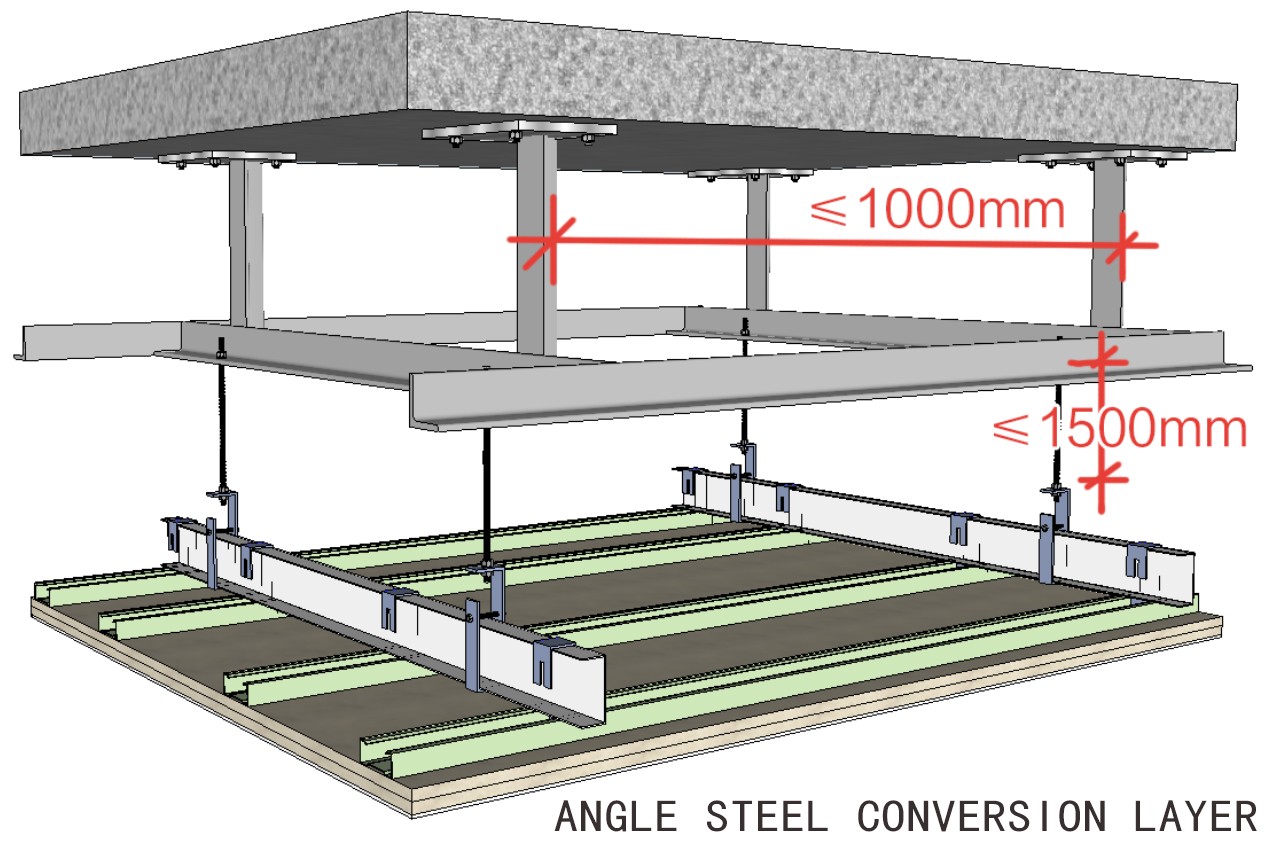
▲Conversion layer
In summary, there is a relationship of approximately equal between the anti support and the transfer layer (anti support. transfer layer), but the applicable space is different. The purpose is to shorten the length of the suspension rod to ensure the safety of the ceiling and facilitate the layout of equipment pipelines in the ceiling space.
However, the conversion layer is used on a large area, and the anti support is used locally, and the two hardly appear in the same space.
3、In what circumstances does the anti support/conversion layer need to be used?
a、When the length of the suspended ceiling reinforcement is greater than 1.5m and less than 2.5m, reverse support should be set according to the specification requirements;
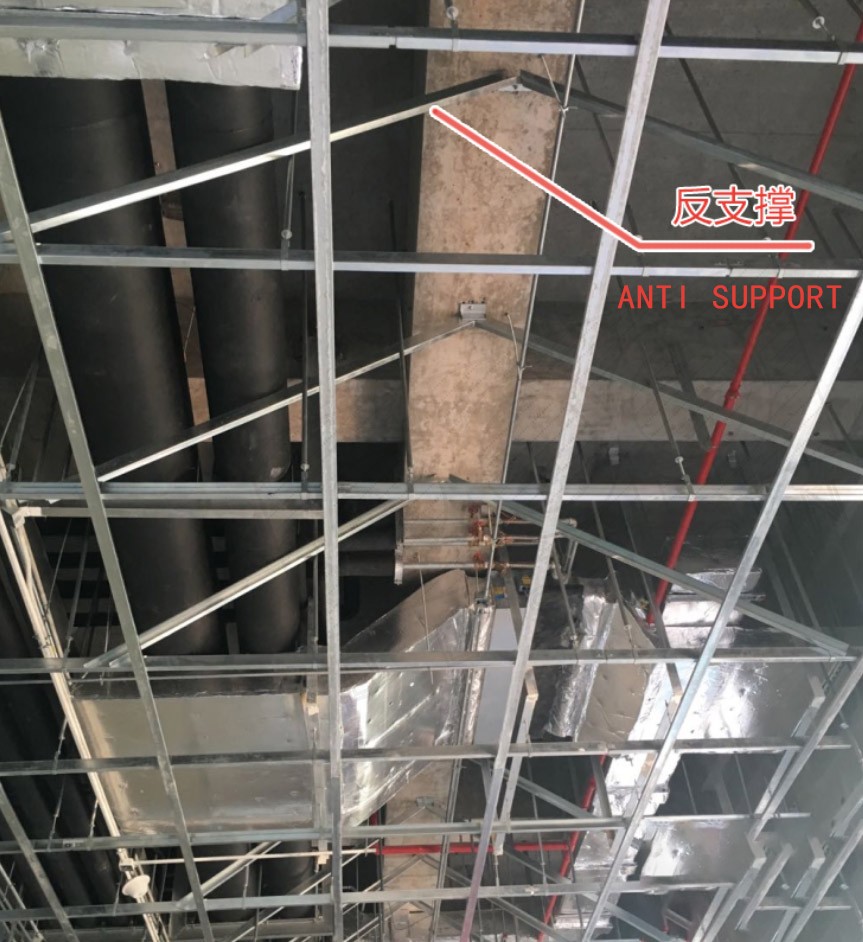
b、When the internal space of the suspended ceiling is greater than 2.5m (or when the vertical length of the reverse support is greater than 1500mm), a conversion layer should be set up;
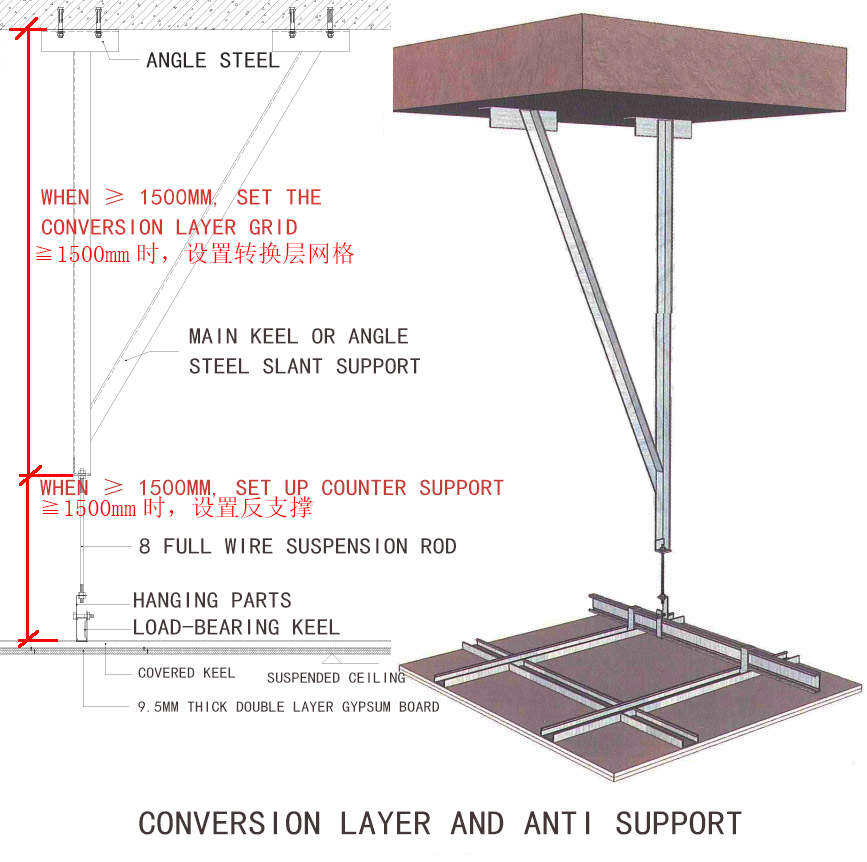
PS: When the suspension rod meets the equipment, it should be adjusted and added. When the ceiling area is large and the layout of the ceiling equipment is complex, it is not recommended to use reverse support.
02.Standard Process Practices
The anti support methods include: main keel tie method, suspension rod full length tie method, and inverted triangle method.
The methods of conversion layer include: steel frame conversion layer, suspension rod+steel frame conversion layer.
1、Reverse support method
a、 Main keel tie method

▲ Main keel tie method
The main keel tie method is suitable for suspension rods with a length exceeding 1.5m and less than 2.5m.
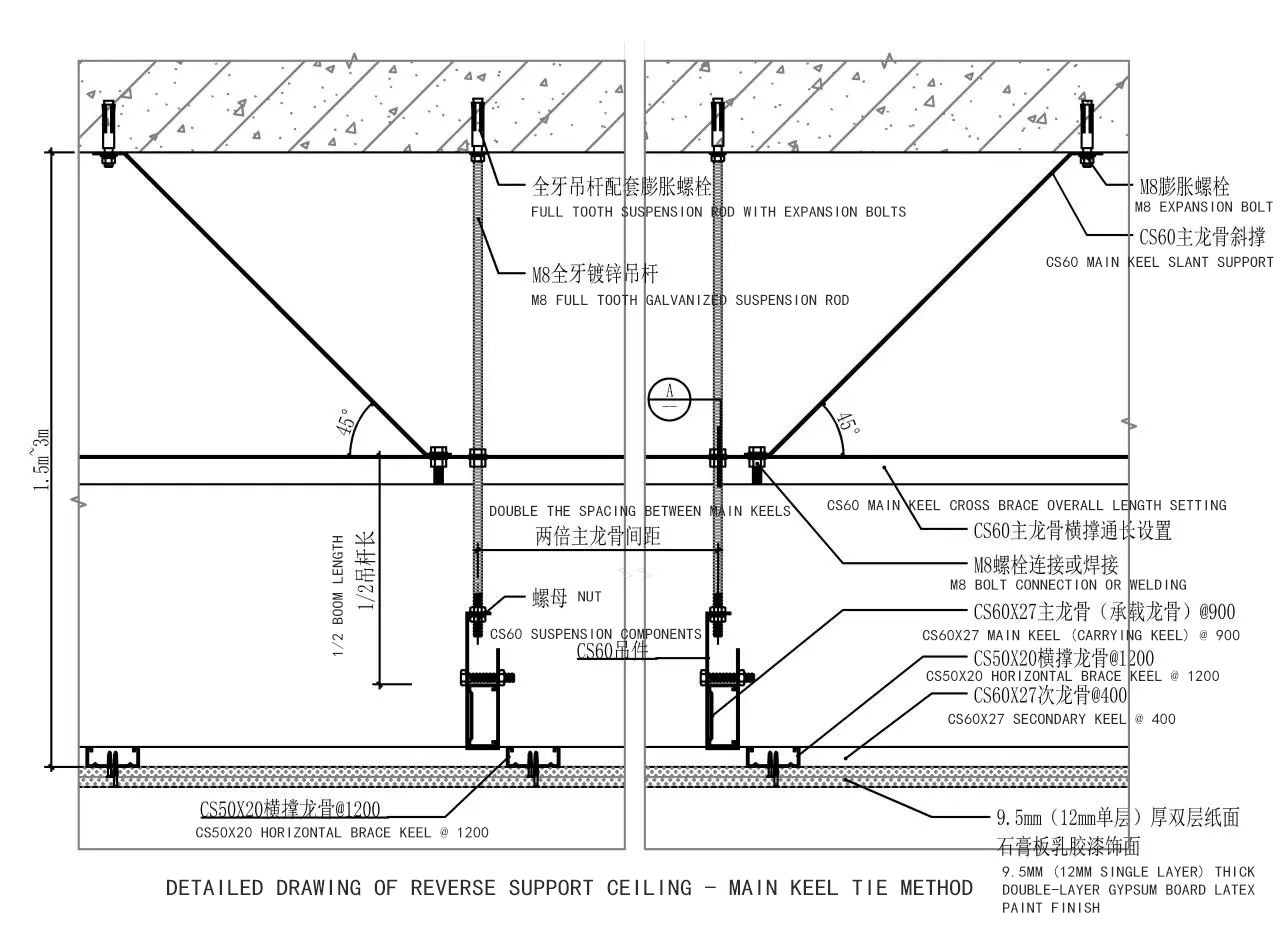
Specific method: Drill holes at the bottom edge of the CS60 main keel cross brace every other distance between the main keels, pass through the M8 full tooth suspension rod, and fix it with upper and lower nuts after determining the position.
CS60 main keel slant support shall be set in opposite direction every two times of main keel spacing. When the length of suspender exceeds 1.5m and is less than 2m, CS50 main keel shall be used appropriately.
b.Full length tie method of suspension rod
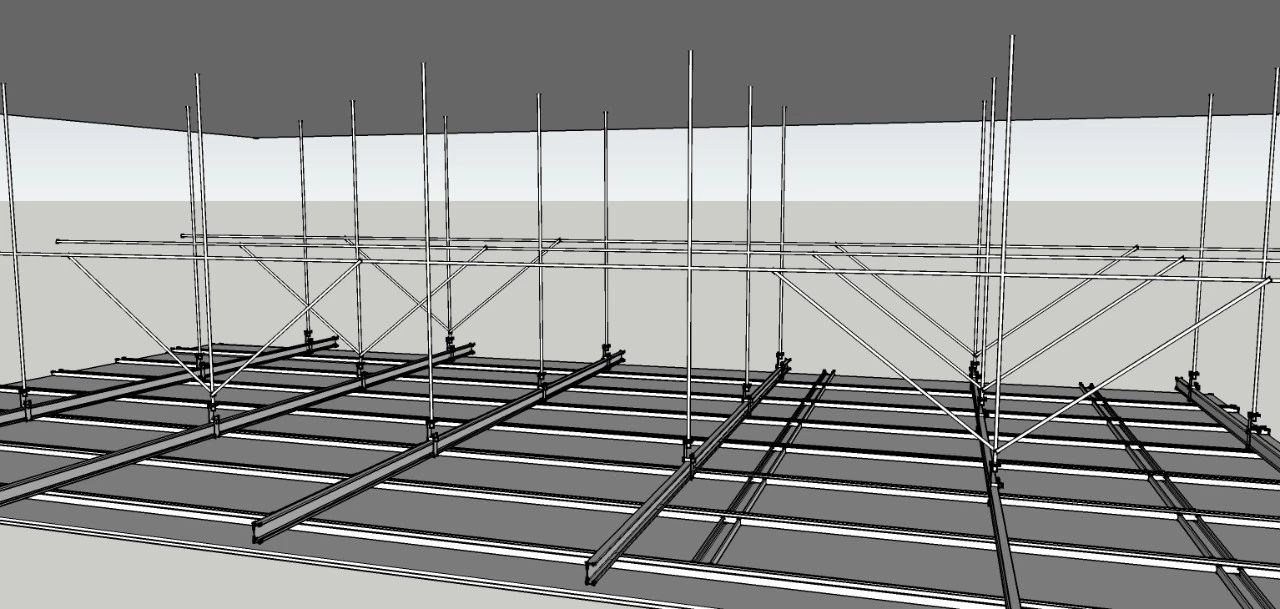
▲Full length tie method for suspension rods
The full length tie method of the suspension rod is applicable when the length of the suspension rod exceeds 1.5m and is less than 3m.
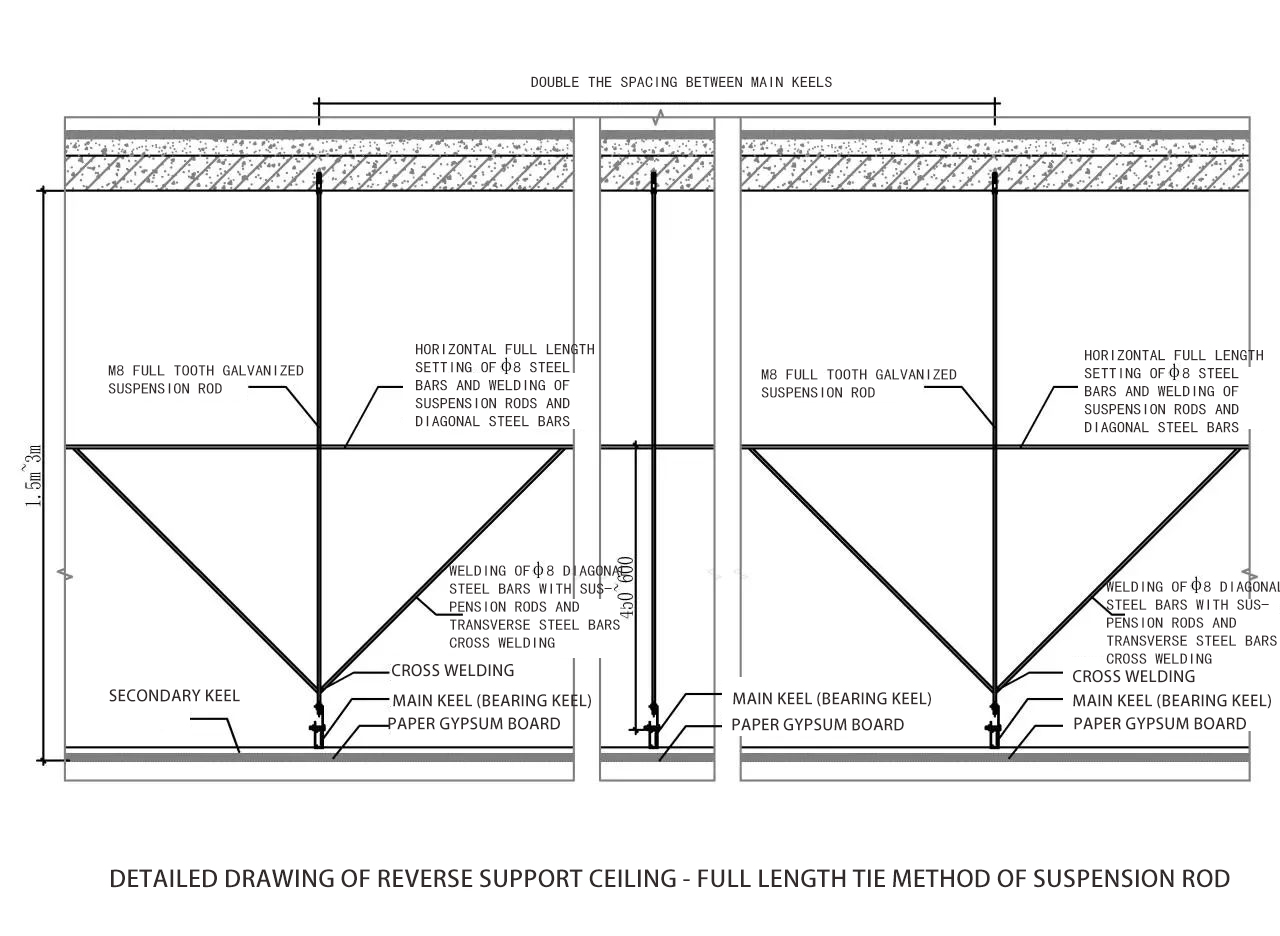
Practice requirements: The diagonal steel bars should be set every two times the spacing between the main keels. 08 Horizontal steel bars, diagonal steel bars, and their welding points with M8 full tooth suspension rods must undergo rust prevention treatment. 08 steel bars can be replaced with M8 full tooth suspension rods, but rust prevention treatment is required at the welded joints.
c、Inverted trigonometry
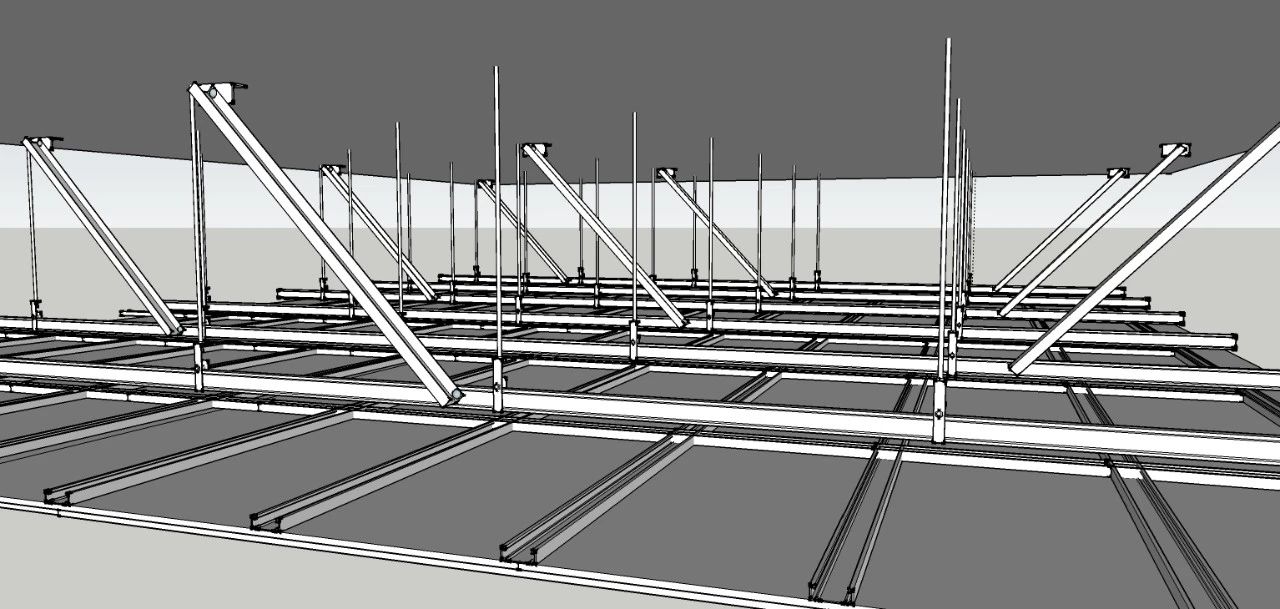
▲Inverted Triangle Method
The inverted triangle method is applicable when the length of the suspension rod exceeds 1.5m and is less than 2m. The installation spacing should be within 2m, distributed in a plum blossom shape around a certain center, and should not be set on the same straight line.
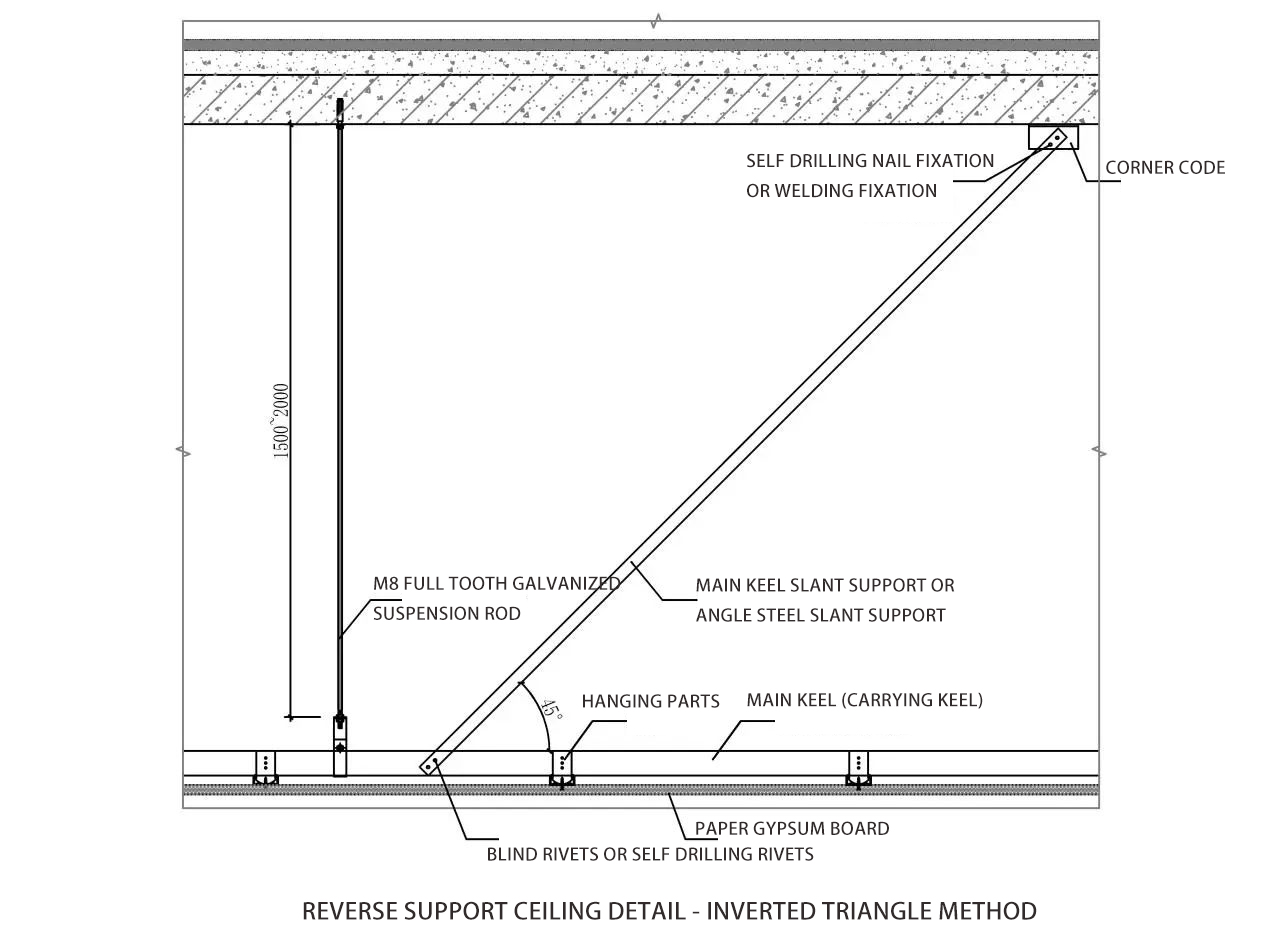
2、Conversion layer approach
a、 Steel frame conversion layer
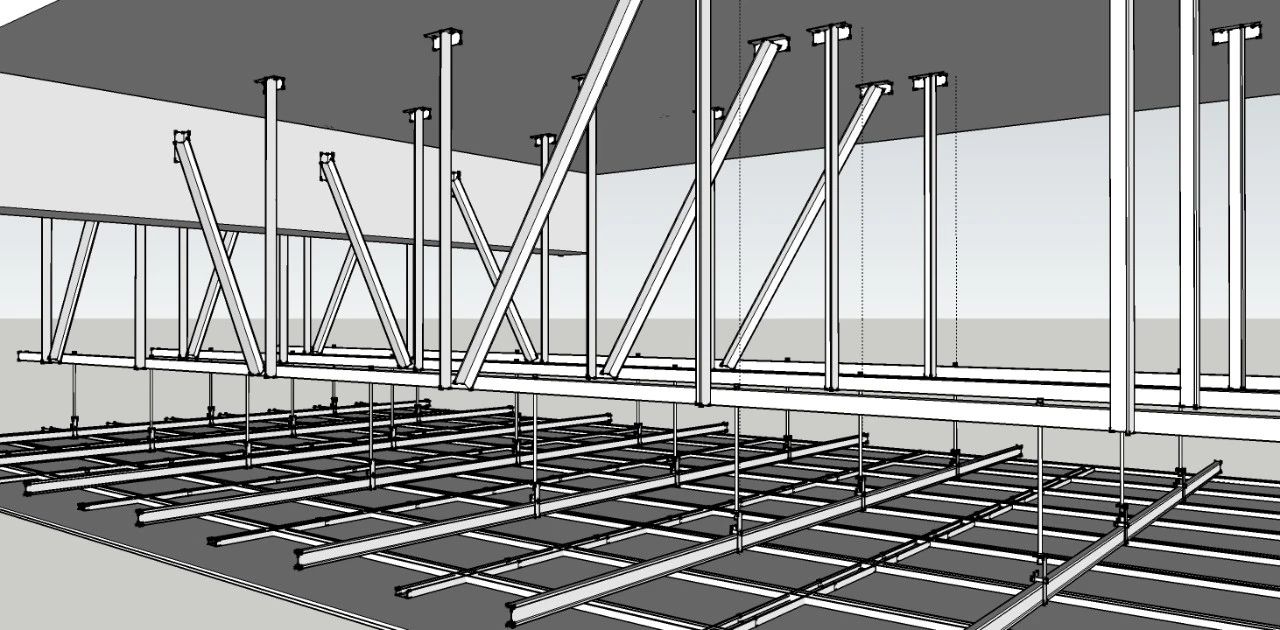
▲Angle steel conversion layer
The suspension rod of the transfer floor adopts rigid components such as angle steel and channel steel, and the rod end is reliably connected to the bottom surface of the floor slab.
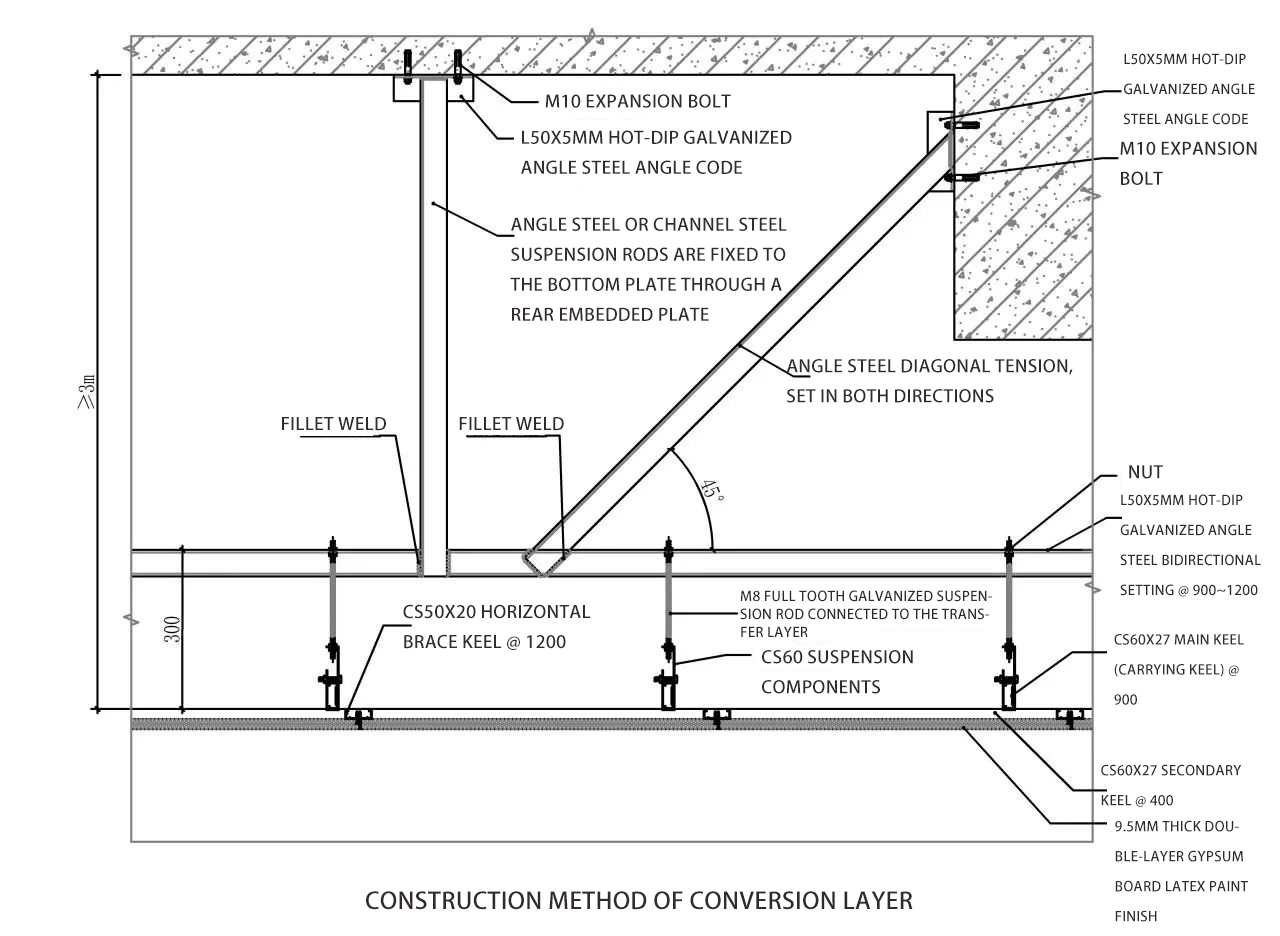
To ensure the stability of the transfer layer, diagonal braces should be reliably connected to the concrete beam and wall sides, and should be installed in both vertical and horizontal directions.
When it is not possible to connect with the beam side or wall side, cross tie rods should be set between the suspension rods, both vertically and horizontally.
b、Hanger+steel frame conversion layer
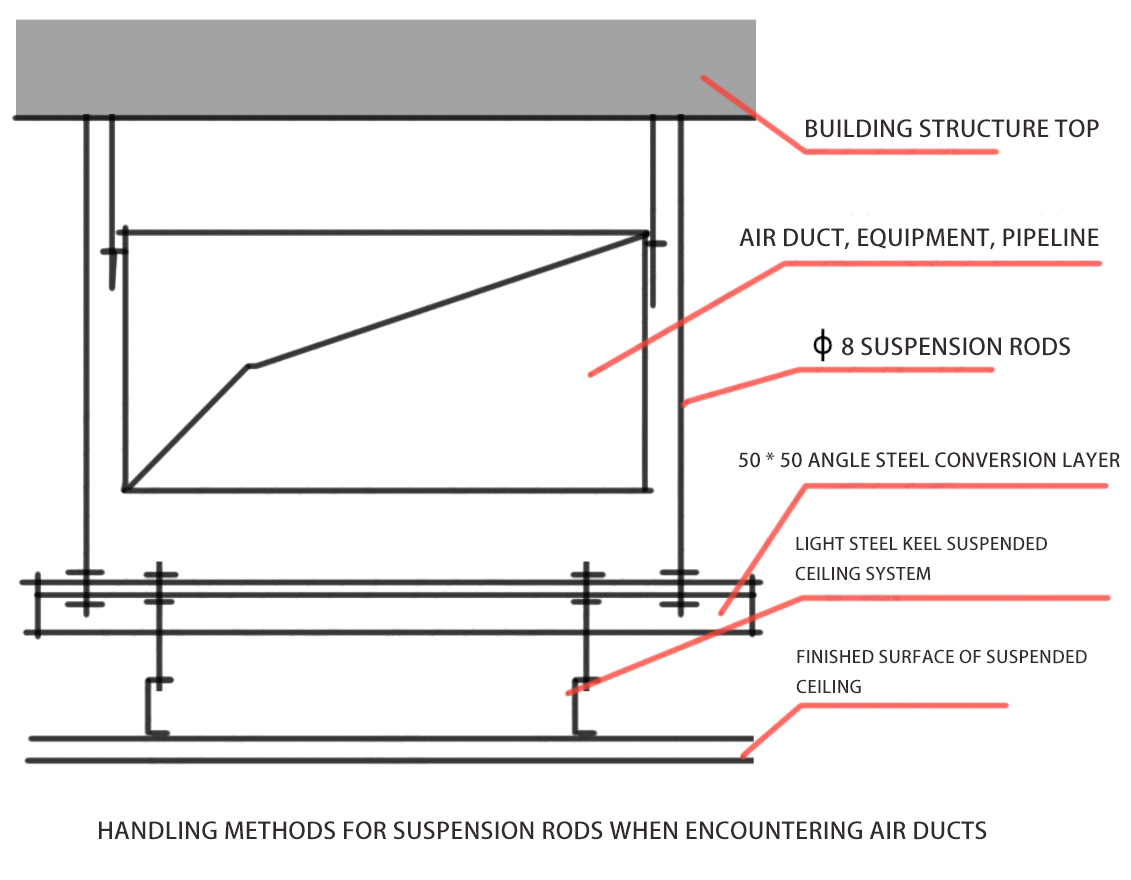
Based on the previous content, it can be seen that the method of anti support/conversion layer is to ensure that the length of the suspension rod is not greater than 1500mm. Therefore, the method of conversion layer can also be made into: suspension rod+angle steel+suspension rod. This method is more cost-effective compared to the full steel frame conversion layer and more flexible in practical applications.
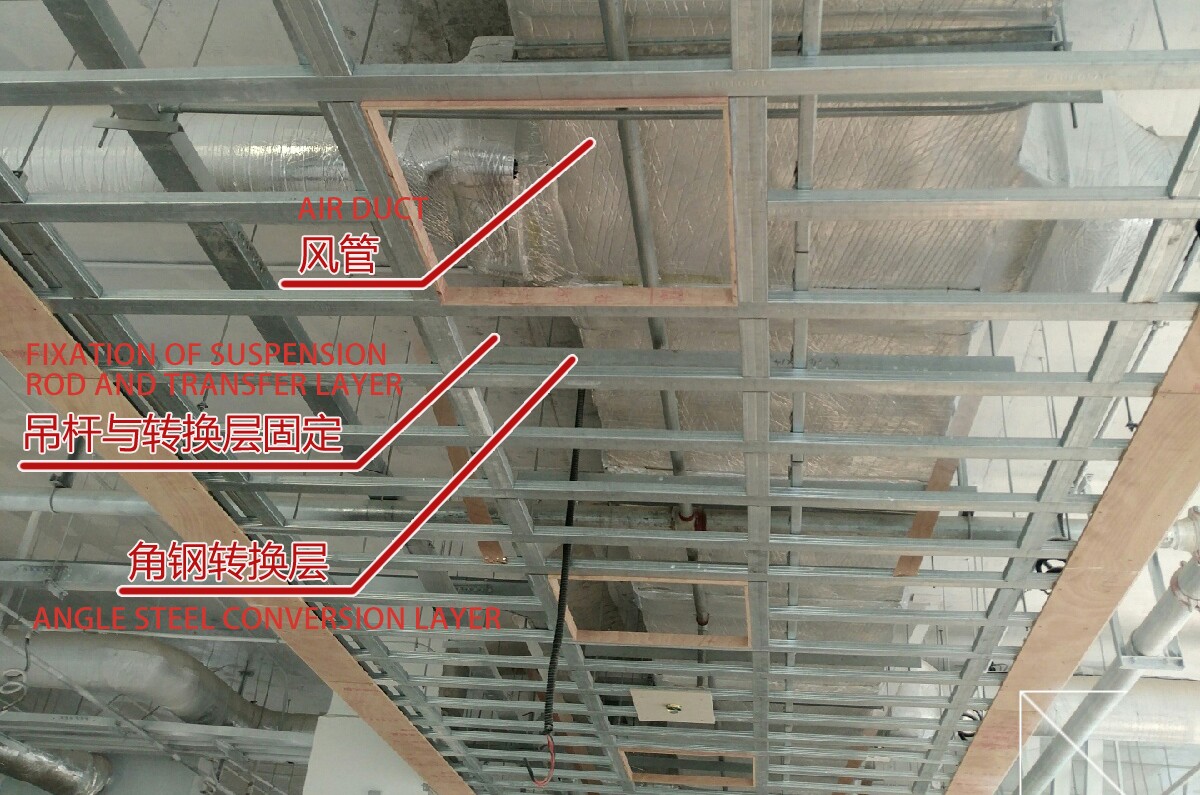
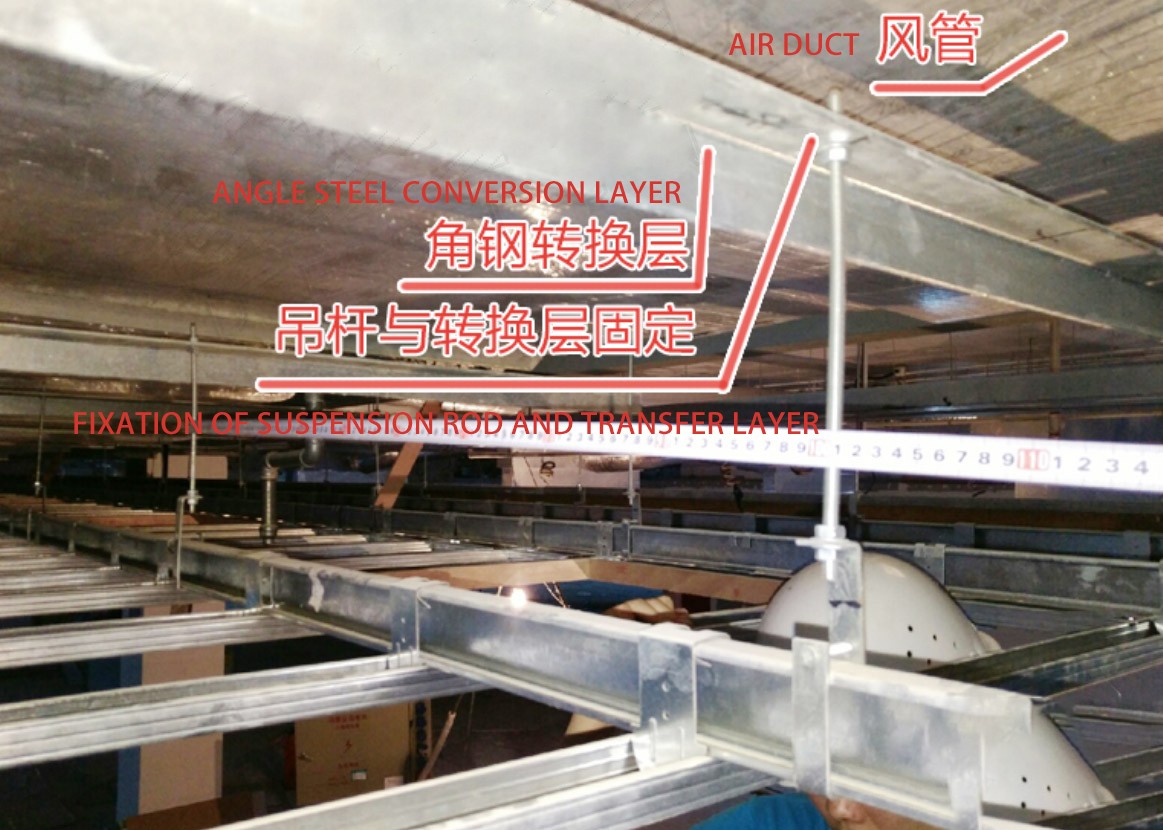
Summary:
The purpose of the anti support and conversion layer is to:
①Shorten the length of the suspension rod to ensure the safety of the ceiling;
②Convenient layout of equipment pipelines in the suspended ceiling space; And the building components set up.
Among them: 1. When the length of the suspended ceiling reinforcement is greater than 1.5m and less than 2.5m, reverse support should be set according to the specification requirements;
When the internal space of the suspended ceiling is greater than 2.5m (or when the vertical length of the reverse support is greater than 1500), a transfer layer should be set up;
Article from Weixin Design